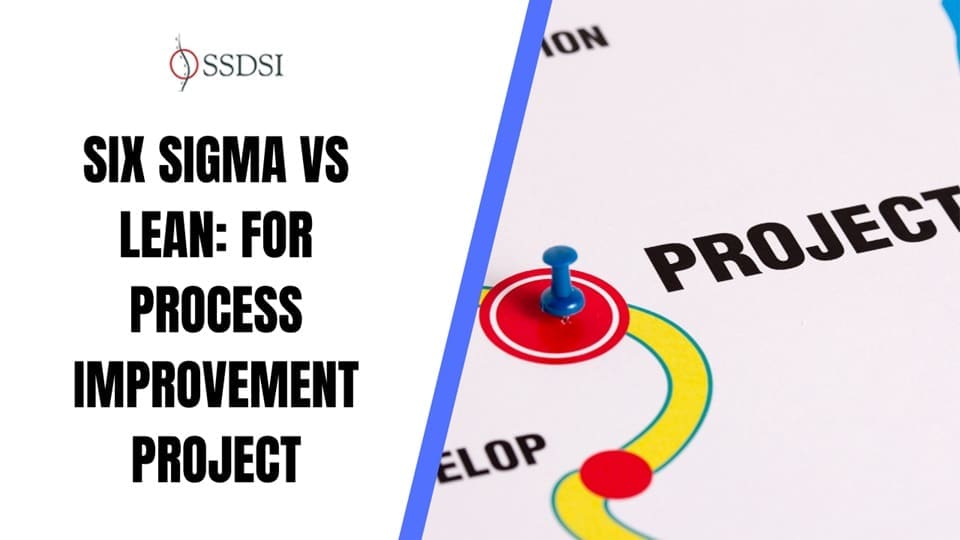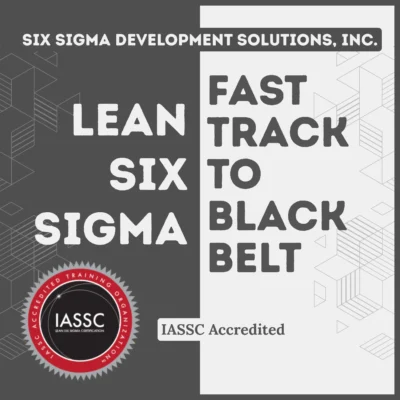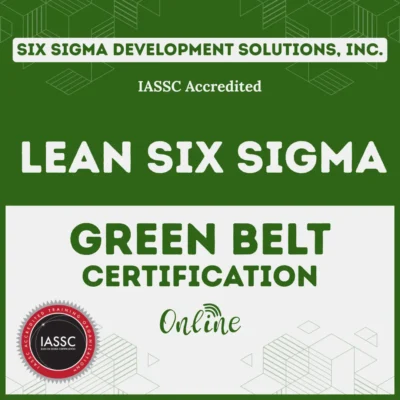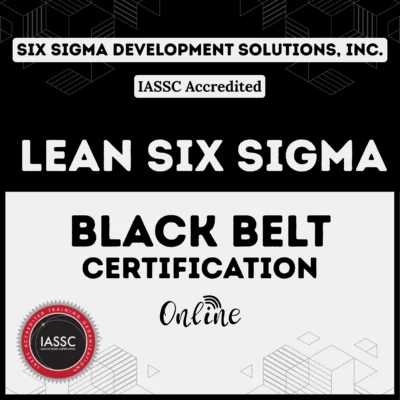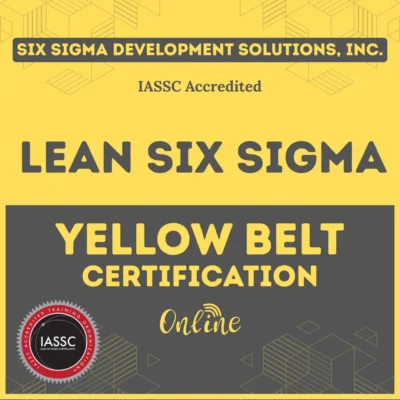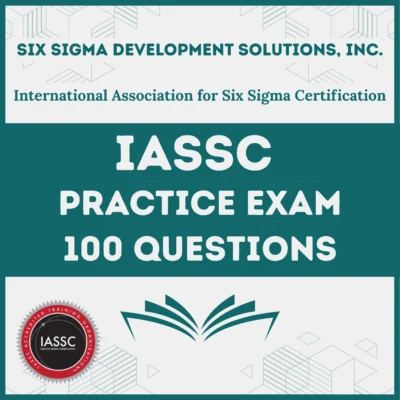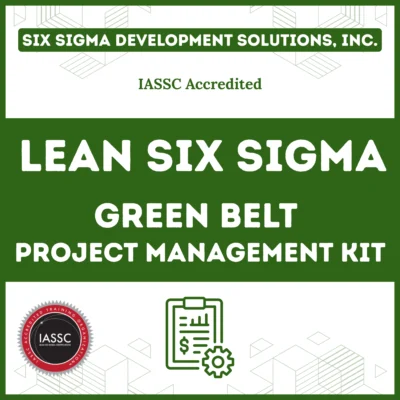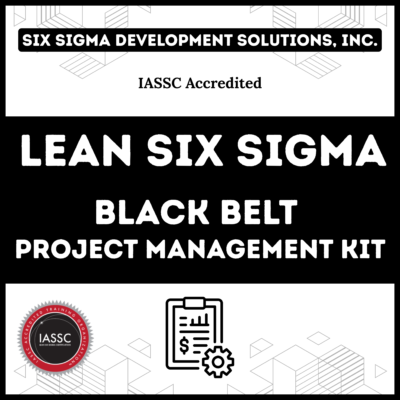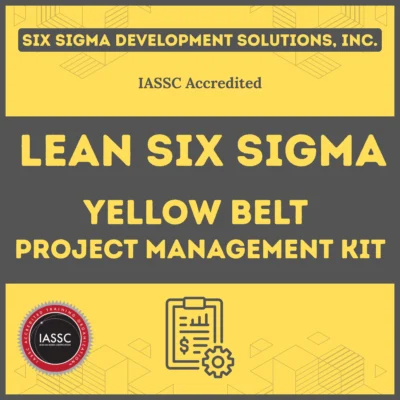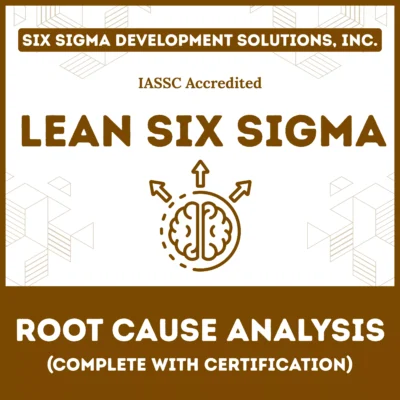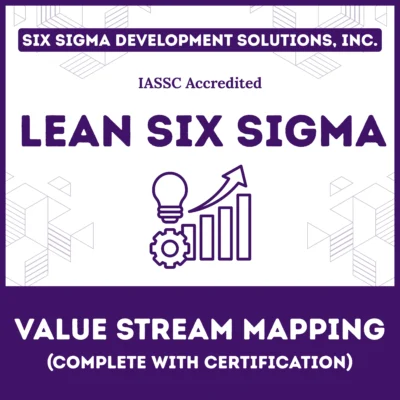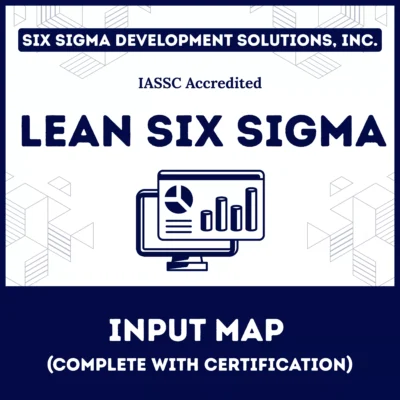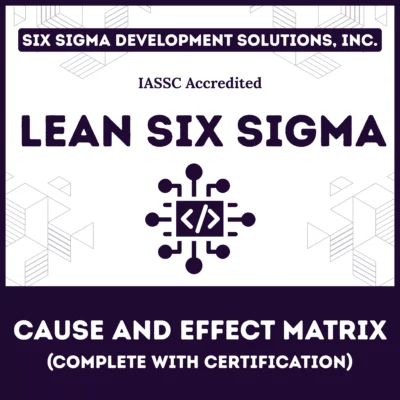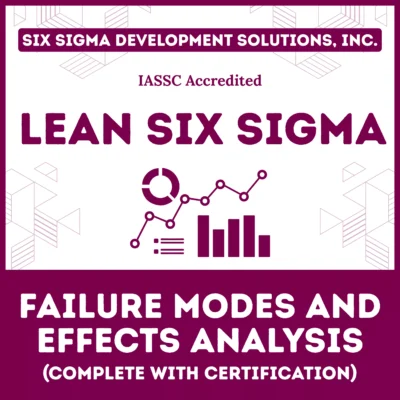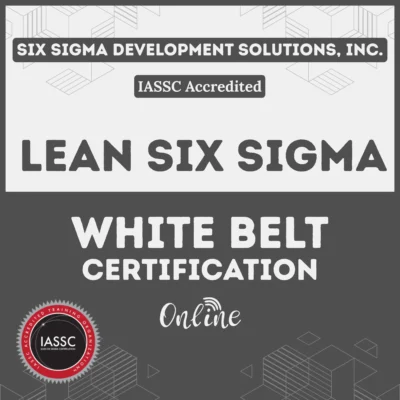Organizations worldwide face mounting pressure to optimize their operations while delivering exceptional value to customers. When process improvement initiatives become critical, two methodologies consistently rise to the forefront: Six Sigma and Lean. However, choosing between these powerful approaches often leaves business leaders scratching their heads.
The fundamental distinction lies in their primary focus areas. While Six Sigma focuses on reducing process variation and enhancing process control, lean drives out waste (nonvalue-added processes and procedures) and promotes work standardization and flow. Understanding this core difference becomes your first step toward making an informed decision.
Table of contents
What is Six Sigma?
Six Sigma is a data-driven methodology focused on reducing process variation and improving quality. Originating at Motorola in the 1980s, it aims to achieve near-perfect processes by minimizing defects to a rate of fewer than 3.4 per million opportunities (DPMO). The methodology revolves around the DMAIC framework—Define, Measure, Analyze, Improve, Control—which provides a structured approach to problem-solving.
Imagine a manufacturing plant where defective parts are costing thousands of dollars daily. Six Sigma would dive into the data, pinpoint the root cause of defects, and implement precise solutions to ensure consistent quality. It’s like a surgeon wielding a scalpel, carefully excising inefficiencies with statistical precision.
Key features of Six Sigma include:
- Focus on Quality: Targets defect reduction and process consistency.
- Data-Driven: Relies on statistical tools like control charts and regression analysis.
- Structured Approach: Uses DMAIC for systematic problem-solving.
- Team-Oriented: Involves trained professionals like Green Belts and Black Belts.
What is Lean?
Lean, born from Toyota’s Production System, is all about streamlining processes by eliminating waste. It focuses on delivering value to the customer by optimizing workflows and reducing non-value-adding activities. Lean identifies seven (sometimes eight) types of waste: overproduction, waiting, transport, overprocessing, inventory, motion, defects, and underutilized talent.
Picture a restaurant kitchen where orders are delayed due to cluttered workstations and unnecessary steps. Lean would reorganize the workspace, simplify tasks, and ensure ingredients flow seamlessly to the chef. It’s like a chef choreographing a dance, ensuring every move serves the dish.
Key features of Lean include:
- Waste Elimination: Targets inefficiencies like excess inventory or delays.
- Customer-Centric: Prioritizes delivering value to the end user.
- Continuous Improvement: Embraces Kaizen, the philosophy of ongoing small changes.
- Flow Optimization: Streamlines processes for speed and efficiency.
Public, Onsite, Virtual, and Online Six Sigma Certification Training!
- We are accredited by the IASSC.
- Live Public Training at 52 Sites.
- Live Virtual Training.
- Onsite Training (at your organization).
- Interactive Online (self-paced) training,
Key Differences Between Six Sigma and Lean
While both methodologies aim to improve processes, their approaches differ significantly. Understanding these differences is crucial for choosing the right one for your project.
1. Focus
Six Sigma zeros in on quality and precision, using statistical tools to reduce variability. Lean, conversely, focuses on speed and efficiency, eliminating waste to create smoother workflows.
2. Tools and Techniques
Six Sigma employs advanced statistical methods like hypothesis testing and design of experiments. Lean uses simpler tools like value stream mapping, 5S (Sort, Set in order, Shine, Standardize, Sustain), and Kanban to visualize and optimize processes.
3. Goals
Six Sigma aims for near-perfect quality, often measured by defect rates. Lean seeks to maximize customer value by minimizing waste and improving flow.
4. Complexity
Six Sigma projects often require extensive data analysis and trained specialists, making them more complex. Lean is generally simpler, emphasizing practical changes anyone can implement.
5. Cultural Impact
Six Sigma fosters a data-driven culture, requiring buy-in from leadership and trained teams. Lean promotes a mindset of continuous improvement, encouraging all employees to identify and eliminate waste.
When to Use Six Sigma?
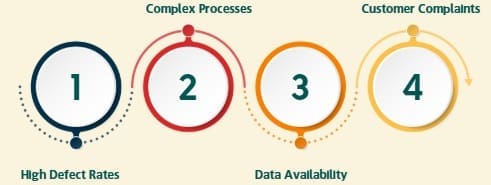
Six Sigma shines in scenarios where precision and quality are paramount. If your process improvement project involves complex systems with high variability or defects, Six Sigma is likely the better choice. Here are some situations where Six Sigma excels:
- High Defect Rates: If a manufacturing line produces too many defective products, Six Sigma’s data-driven approach can identify and eliminate root causes.
- Complex Processes: In industries like pharmaceuticals or aerospace, where precision is critical, Six Sigma ensures consistent outcomes.
- Data Availability: If you have access to robust data, Six Sigma’s statistical tools can uncover insights that drive improvement.
- Customer Complaints: When quality issues lead to customer dissatisfaction, Six Sigma can restore trust by minimizing defects.
For example, a hospital struggling with medication errors could use Six Sigma to analyze data, identify patterns, and implement controls to ensure patient safety. The DMAIC framework would guide the team through defining the problem, measuring error rates, analyzing causes, improving processes, and controlling outcomes.
Also Read: The Process Improvement Framework
When to Use Lean?
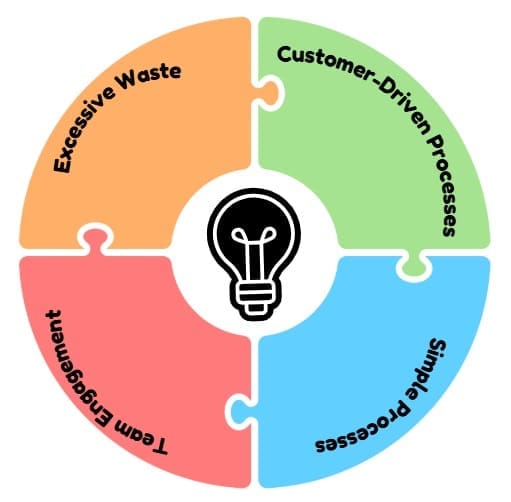
Lean is ideal for projects where speed, efficiency, and waste reduction are the primary goals. If your process is bogged down by inefficiencies or delays, Lean’s streamlined approach can transform it. Consider Lean in these scenarios:
- Excessive Waste: If a process involves unnecessary steps, excess inventory, or waiting times, Lean’s waste-elimination focus is perfect.
- Customer-Driven Processes: When customer satisfaction hinges on faster delivery or reduced costs, Lean ensures value flows to the end user.
- Simple Processes: Lean works well for straightforward processes that don’t require complex statistical analysis.
- Team Engagement: If you want to empower employees to drive improvements, Lean’s collaborative, Kaizen-based approach fosters participation.
For instance, a retail store facing long checkout lines could use Lean to map the customer journey, eliminate bottlenecks, and reorganize staff tasks for faster service. Tools like value stream mapping would highlight inefficiencies, while 5S could optimize the checkout area.
Can You Combine Six Sigma and Lean?
Absolutely. Many organizations blend the two methodologies into Lean Six Sigma, combining Lean’s waste reduction with Six Sigma’s quality focus. This hybrid approach is powerful for projects requiring both efficiency and precision.
For example, a logistics company might use Lean to streamline its delivery routes (reducing transport waste) and Six Sigma to ensure packages are delivered without damage (reducing defects). Lean Six Sigma integrates tools like value stream mapping with statistical process control, creating a holistic improvement strategy.
However, combining them requires careful planning. Lean Six Sigma projects can be resource-intensive, requiring trained professionals and strong leadership support. Ensure your team is equipped to handle both methodologies before diving in.
How do you decide whether to use Six Sigma or Lean for a Process Improvement Project?
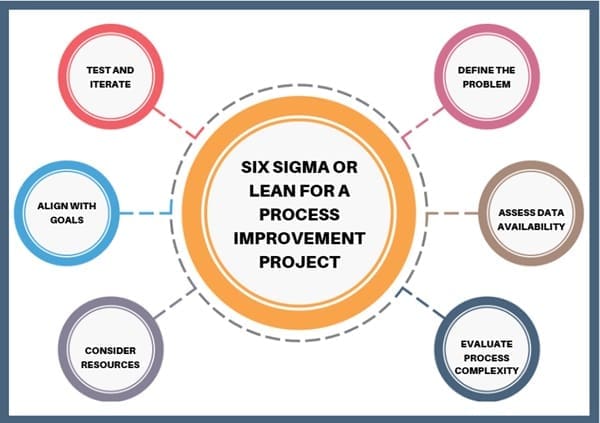
Choosing between Six Sigma and Lean (or a combination) depends on your project’s goals, resources, and context. Follow this framework to make an informed decision:
1. Define the Problem
Clearly articulate the issue you’re addressing. Is it a quality problem (e.g., defects, errors) or an efficiency problem (e.g., delays, waste)? For quality issues, lean toward Six Sigma; for efficiency, consider Lean.
2. Assess Data Availability
Do you have access to detailed data for analysis? If yes, Six Sigma’s statistical tools can be leveraged. If data is limited or the problem is more about workflow, Lean is likely sufficient.
3. Evaluate Process Complexity
Complex processes with multiple variables benefit from Six Sigma’s rigor. Simple processes with clear inefficiencies are better suited for Lean’s straightforward approach.
4. Consider Resources
Six Sigma often requires trained professionals (e.g., Black Belts) and significant time investment. Lean is more accessible, requiring less formal training. Assess your team’s skills and budget.
5. Align with Goals
If your goal is defect reduction or regulatory compliance, Six Sigma is ideal. If you aim to improve speed or customer satisfaction, Lean is the way to go. For both, explore Lean Six Sigma.
6. Test and Iterate
Start with a pilot project to test your chosen methodology. Monitor results and adjust as needed. Sometimes, a hybrid approach emerges organically as you refine your strategy.
Also Read: Best Lean Manufacturing Process Improvement Certification
What Makes Six Sigma the Right Choice for Your Project?
Six Sigma operates as a data-driven methodology that systematically reduces defects and variation in business processes. Six Sigma focuses on quality through rigorous statistical analysis and measurement.
Key Characteristics of Six Sigma
Six Sigma thrives in environments where precision matters most. The methodology employs the DMAIC framework (Define, Measure, Analyze, Improve, Control) to tackle complex problems systematically. Organizations benefit from Six Sigma when they need to address quality issues, reduce defect rates, or improve process consistency.
The approach demands substantial data collection and analysis capabilities. Teams must possess strong analytical skills to interpret statistical findings effectively. Moreover, Six Sigma projects typically require longer implementation timelines due to their comprehensive nature.
When Six Sigma Becomes Your Best Option
Several scenarios make Six Sigma the preferred choice for process improvement initiatives:
Complex Quality Issues: When your organization struggles with consistent quality problems across multiple products or services, Six Sigma’s statistical rigor provides the tools needed for sustainable solutions.
Data-Rich Environments: Organizations with robust data collection systems can leverage Six Sigma’s analytical strength to uncover hidden patterns and root causes that simpler methods might miss.
High-Stakes Processes: Critical processes where defects carry significant financial or safety implications benefit from Six Sigma’s thorough approach to variation reduction.
Regulatory Compliance: Industries with strict quality standards often find Six Sigma’s documentation and measurement requirements align perfectly with compliance needs.
Why Lean Manufacturing Might Be Your Perfect Fit?
Lean methodology takes a different approach entirely. Lean focuses on efficiency by eliminating waste and streamlining processes to maximize customer value. The philosophy originated from Toyota’s production system and emphasizes continuous improvement through employee engagement.
Core Principles of Lean Methodology
Lean identifies eight types of waste that plague business processes: overproduction, waiting, transportation, inappropriate processing, unnecessary inventory, unnecessary motion, defects, and unused employee creativity. By systematically eliminating these wastes, organizations create smoother workflows and improved customer experiences.
The methodology promotes visual management, standardized work procedures, and continuous flow. Teams focus on value stream mapping to identify bottlenecks and improvement opportunities throughout entire processes.
Optimal Conditions for Lean Implementation
Lean methodology shines under specific circumstances that align with its waste-elimination focus:
Quick Wins Needed: When organizations require rapid improvements with visible results, Lean’s practical tools often deliver faster outcomes than Six Sigma’s analytical approach.
Service-Oriented Processes: Lean is less focused entirely on manufacturing, but often shapes every facet of a business. Service industries particularly benefit from Lean’s focus on customer value and process flow.
Employee Engagement Priority: Lean’s emphasis on frontline worker involvement makes it ideal for organizations seeking to build improvement culture from the ground up.
Resource Constraints: Organizations with limited analytical resources or tight budgets often find Lean’s straightforward tools more accessible than Six Sigma’s statistical requirements.
FAQs on Six Sigma Vs Lean for Process Improvement Project
What is the main difference between Six Sigma and Lean?
Six Sigma focuses on reducing defects and improving quality through data-driven methods, while Lean emphasizes eliminating waste and optimizing workflows for efficiency.
Can Lean and Six Sigma be used together?
Yes, Lean Six Sigma combines both methodologies to address quality and efficiency simultaneously, ideal for complex projects requiring comprehensive improvement.
How long does it take to implement Six Sigma or Lean?
Six Sigma projects can take months due to their data-intensive nature, while Lean projects may show results in weeks, depending on the process complexity.
Which industries benefit most from Six Sigma?
Industries like manufacturing, healthcare, and finance, where precision and quality are critical, benefit greatly from Six Sigma.
Which industries benefit most from Lean?
Lean is ideal for industries like retail, logistics, and hospitality, where speed and customer satisfaction are priorities.
Final Words
Deciding between Six Sigma and Lean for a process improvement project comes down to understanding your goals, resources, and the nature of the problem. Six Sigma is your go-to for tackling defects and ensuring quality, while Lean excels at streamlining processes and eliminating waste.
For projects requiring both, Lean Six Sigma offers a powerful hybrid solution. By following a structured decision-making framework and aligning your choice with your organization’s needs, you can unlock transformative results.

About Six Sigma Development Solutions, Inc.
Six Sigma Development Solutions, Inc. offers onsite, public, and virtual Lean Six Sigma certification training. We are an Accredited Training Organization by the IASSC (International Association of Six Sigma Certification). We offer Lean Six Sigma Green Belt, Black Belt, and Yellow Belt, as well as LEAN certifications.
Book a Call and Let us know how we can help meet your training needs.

